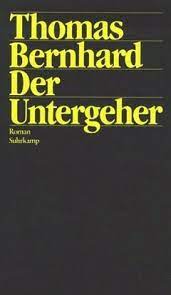Man growing up I was always told "nobody really figured out perspective until the Renaissance"
I was just thinking about how pop culture reinforces this sort of temporal chauvinism that's just like "wow people sure didn't know how to do good stuff back then" that completely erases context like the materials they were working with, the materials and styles that were durable enough to survive the intervening centuries or millennia, or who was making a piece and why.
Like even the really weird, hyper-stylized styles aren't too weird or crude when compared with something like cartoon styles over the past 100+ years: even with modern tools and modern methods we still make janky weird little pictures that serve a different purpose and convey different things. Even things like perspective and scale get played with for effect despite the "advances" of perspective and the idea that scale should be consistent. Like I'm thinking about how much of what we associate with medieval European art was just shit like bored monks doodling cartoons in the margins of books, creating works that look like cartoons and use similar visual cues as cartoons to convey information.
Yeah, it’d be like future archaeologists calling all our art crude based on the figures on “Walk” signs and CPR guides.
Imagine getting the vibes of this era's art from funko pops and bathroom stall graffiti.
This is something that gets hammered on in Archeology and Anthropology - People have always been extremely skilled and inventive within the limits of the tools they have available. There's no such thing as "primitive" people or primitive tools. People making stone tools selected the best materials and often transported obsidian and other desirable materials hundreds of miles. Impressive mining operations were conducted to exploit veins of flint and chert. Skilled workers could produce many different kinds of tools and blades. A skilled flint-knapper can visualize and then produce a desired shape rapidly using a very nuanced understanding of how the stone flakes and chips. A single cobble could be shaped to produce numerous different tools, or the worker could focus on making one specific, highly refined tool. And the result was the sharpest blades that it is physically possible to make without bonkers 21st century material sciences.
In all these survival video games you see stone tools that are just a rock tied to a stick, but irl stone tools were made with great care and precision.
This is true. Renaissance perspective painting builds upon mathematical work from the muslim world brought to Europe during the crusades. Doing perspective on the human face is a lot simpler and more intuitive than drawing, for instance, the interior of a building.
There's cave art that does what the cubists and futurists were doing in the 1910s at the forefront of the avant-garde.
I’m less surprised by the illustrative skill then by the fact that they were able to get all the necessary pigments they wanted for those colors.
There are so many brightly colored toxic minerals in the world, and afaik pigments were widely traded. Gotta remember - These artists were in the middle of the world, at the center of trade-routes stretching from China to the most savage and remote reaches of Europe.
Anyone doing death portraits like that was going to be a skilled tradesperson, and you weren't going to become a skilled tradesperson without access to the needed materials. Whether that meant wealthy family or apprenticeship idk
the styles of tunic (lol look at that tiny swaztika) in the roman period are basically only known from egypt as well, since most of them couldn't be preserved outside the desert. and papyrus documents.
shit i think deserts just rule for preserving perishable indications of sophisticated lives & other areas are probably unfairly archaeologically underrepresented
We know Olmecs knew how to chisel rocks into faces very goodly cuz they chiseled massive rocks
The did not forget how to art, they just had their own cultural styles and preferences. Medieval illuminated manuscripts are gorgeous.
Yeah the Human brain hasn't really changed in the past few thousand years. If we can do it today, we could probably do it back then.
When you see less realistic styles of art glorified in royal history - like the ancient Egyptian artwork on the sidebar, for example - that's the result of ruling class preferences. The Pharaohs probably could have found someone who could draw in a more realistic style, maybe, given enough luck and time, but they decided they wanted the stuff on the right instead.
And because that's what the ruling class went with, that's what we usually learn about later.
This is wildly ahistorical. It's like saying the laws of combustion always existed and therefore someone in 1200CE could have built a car if they wanted, they just preferred horses.
Well I'm looking at a very realistic painting of two guys from the 2nd century AD, ... so it sure seems like at least some people knew how to draw like this back then.
"Anatomically modern humans" are recognized as having been a thing about 450k years ago, and the line between anatomically modern humans and slightly older humans is pretty arbitrary. There's still a ton of debate about when we became as smart as we are.
Egyptians drawing realistic portraits while euro's drew shit like this.
That style of funerary artwork in Egypt is from the period when Egypt was part of the empire, and the very few surviving scraps of Roman paintings suggest that the style was widespread, but has only been preserved in any significant quantity in Egyptian tombs.
The big issue was that the paints they had to work with at the time were expensive and shitty, being difficult to work with and extremely delicate once placed. Hence why most surviving artwork are janky, mass produced murals where the color was protected in the tile, crude graffiti that got protected from the elements, really anything where the color was fixed into a more durable form, and things made of stone or metal which lost any enamel or paint they may have once had.
But there were definitely still skilled artists all over the place, both in the form of realistic painters, in sculptors, and in more stylized forms like pottery (like that weird stylized figure style that gets associated with the Greeks was basically just a technical method of getting clear and durable figures onto pottery) or mural creation. It's just only a tiny fraction of the work from that time has survived to the modern day, and the vast, vast bulk of artwork produced in that era was cheaply made template work designed to be mass produced so that's what we most associate with Classical art.
 Akchually, this is from the
Akchually, this is from the GreekRoman period of EgyptGreek period ended right in 30 BC *
I love these types of portraits. I have always found this art style to be very beautiful.
At times I think of how this style of Mediterranean art might have influenced the art styles of later works like the 6th century icons found at St.Catherine's Monastery in the Sinai penninsula.
meanwhile stinky dirty europeans lmao, place of culture and arts my fucking doodoo ass













